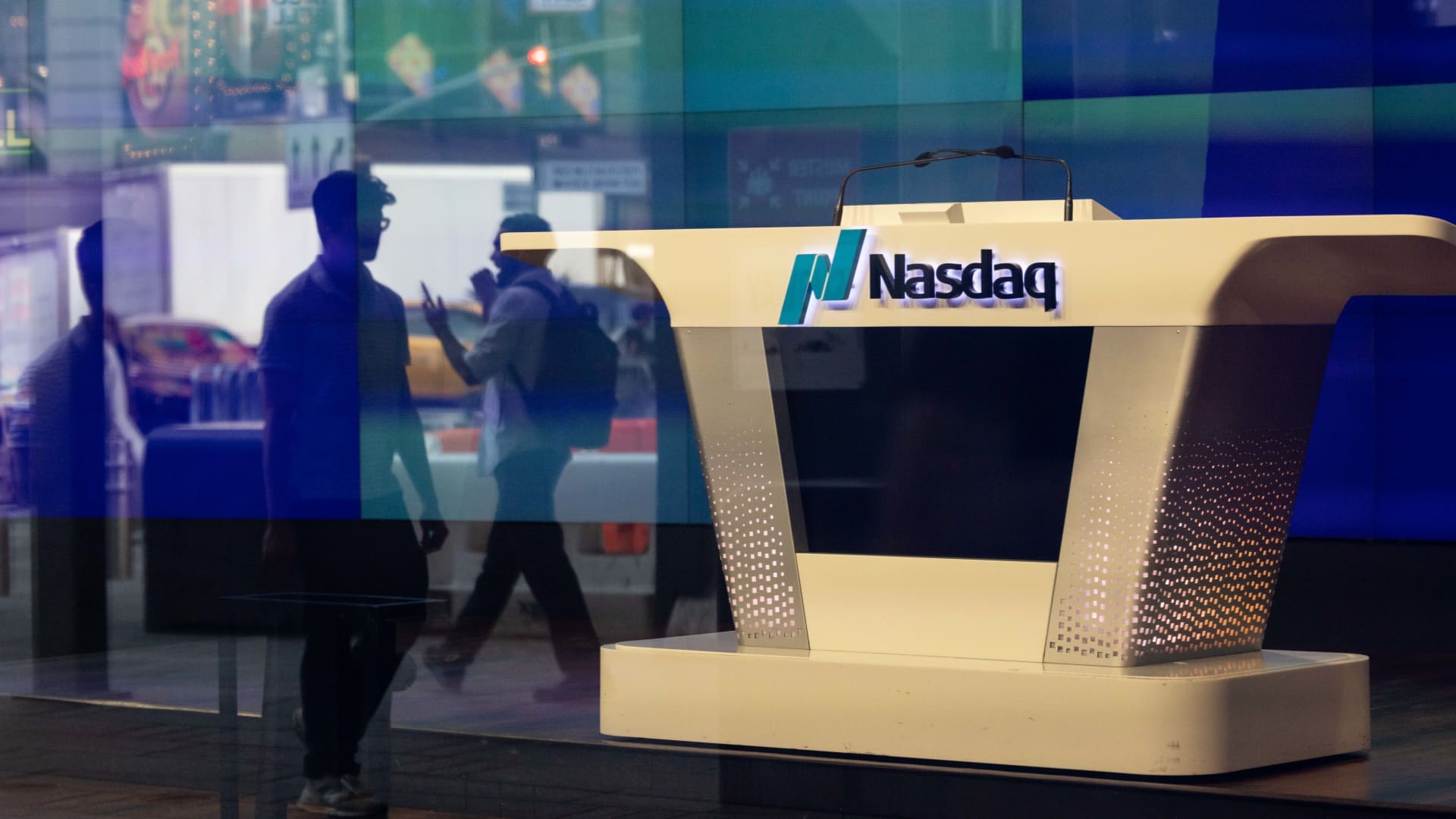[ad_1]
The Nasdaq MarketSite in New York Metropolis, United States, on Monday, Sept. 16, 2024. Â
Yuki Iwamura|Bloomberg|Getty Photos
This document is from in the present day’s CNBC Day by day Open, our worldwide markets e-newsletter. CNBC Day by day Open brings capitalists in control up on no matter they require to grasp, regardless of the place they’re. Like what you see? You possibly can subscribe right here.
What you require to grasp in the present day
Steady rates in China and Japan Â
Two major central banks in Asia made interest rate decisions on Friday. The People’s Bank of China left its one-year and five-year loan prime rates unchanged at 3.35% and 3.85% respectively, defying expectations. The Bank of Japan also kept rates steady at “around 0.25%,” a move that was in line with Reuters poll estimates.Â
Tech surges Â
After taking a day to digest the U.S. Federal Reserve’s rate cut, investors flocked to tech stocks. On Thursday, Tesla soared 7.4%, Nvidia popped 4% and Apple jumped 3.7%. Lifted by those stocks, the Nasdaq rose 2.5%, its fourth-biggest single-day gain in 2024. Its sharpest rally this year was a 3% increase on Feb. 22. Â
“Recalibration”Â
Fed Chair Jerome Powell’s use of the word “recalibration” seemed to reassure investors that the central bank’s 50 basis point cut wasn’t that worrying. It signaled the Fed wasn’t responding to a slowing economy, but shifting focus to ensuring employment doesn’t dip further, wrote CNBC’s Jeff Cox. Â Â
[PRO] Commodity price movementsÂ
Stocks have rallied on the back of the Fed’s rate cut. Lower rates tend to increase demand for commodities as well â but it’s not always so straightforward. To predict the performance of commodities, like gold, copper and oil, analysts from Citi and HSBC looked at their historical movement after a cut. Â
The bottom line
“Twenty-four little hours / Brought the sun and the flowers / Where there used to be rain,” sings American 1950s star Dinah Washington.Â
Washington might as well be singing about the market’s behavior. Immediately after the Fed announced the jumbo rate slash on Wednesday, stocks hit fresh highs before falling into the red by the end of that day. Â Â Â
But twenty-four hours later, after investors assessed that the half-point cut probably didn’t portend the start of a recession, major indexes rallied to close at record highs. Â
The S&P climbed 1.7% to end at 5,713.64, the first time the broad-based index has broken through the 5,700 ceiling. Likewise, the Dow closed at 42,025.19, its first above the 42,000 level, after the index rose 1.26%. Â
The Nasdaq, buoyed by a rally in names like Tesla, Nvidia and Apple, was the biggest winner among major indexes, surging 2.51%, for its fourth-best day this year. Â
And while history shows that September hasn’t been nice to stocks, it also tells us that when the S&P notches record highs during the month, the fourth quarter’s likely to remain strong. Since 1950, this pattern has played out in 20 out of 22 occasions, noted Oppenheimer.Â
Indeed, BMO is so bullish about the market that the bank raised its year-end target for the S&P to 6,100 â an 8.6% climb from Wednesday’s close â the highest projection on Wall Street.Â
“Much like our last target increase in May, we continue to be surprised by the strength of market gains and decided yet again that something more than an incremental adjustment was warranted,” Chief Investment Strategist Brian Belski wrote to clients in a Thursday note.Â
At the end of Washington’s song, she croons, “What a difference a day makes / And the difference is you.” Powell can perhaps feel like Washington’s serenading him. Â
â CNBC’s Alex Harring, Fred Imbert, Hakyung Kim and Lisa Kailai Han contributed to this story.Â
[ad_2]
Source link




